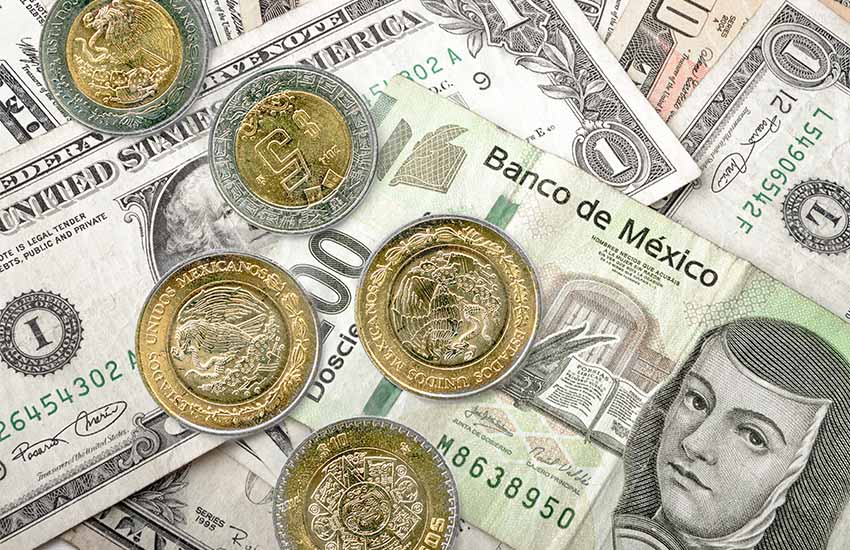Dollar to Pesos

The exchange rate between the US Dollar (USD) and the Mexican Peso (MXN) is a crucial economic indicator that affects various aspects of both economies. Investors, businesses, and policymakers closely monitor the dollar to pesos exchange rate due to its implications on trade balances, inflation, and overall economic stability. In this article, we will delve into the factors influencing the exchange rate between the USD and MXN, the historical trends, and the potential impact on different stakeholders.
Historical Overview:
To understand the current dynamics of the dollar to pesos exchange rate, it’s essential to review its historical trends. Over the years, the exchange rate has experienced significant fluctuations influenced by various economic, political, and global factors. Mexico’s economic ties with the United States, as its largest trading partner, play a crucial role in determining the exchange rate.
During times of economic stability and growth in the United States, the dollar tends to strengthen against the peso. Conversely, economic uncertainties or crises in either country can lead to a depreciation of the dollar relative to the peso. Understanding these historical patterns helps stakeholders anticipate potential changes in the exchange rate.
Factors Influencing Exchange Rates:
- Interest Rates: Central banks play a pivotal role in influencing exchange rates through monetary policy. Changes in interest rates can attract or repel foreign investors. Higher interest rates in the United States, for instance, can attract foreign capital, causing an increase in demand for the dollar and, consequently, an appreciation against the peso.
- Inflation Rates: Inflation differentials between the two countries can impact their respective currencies. If the inflation rate in the United States is lower than that in Mexico, the purchasing power of the dollar increases, making US goods relatively cheaper. This can lead to an increase in demand for US exports, contributing to a stronger dollar.
- Trade Balances: The balance of trade between the two countries affects the exchange rate. If the United States exports more to Mexico than it imports, there is an increased demand for dollars to pay for these exports, leading to a stronger dollar. Conversely, a trade deficit may result in a weaker dollar.
- Political Stability: Political stability in a country is a significant factor affecting investor confidence and, consequently, the exchange rate. Political uncertainty or unrest can lead to a depreciation of the local currency. Changes in government policies and geopolitical events can create volatility in the exchange rate.
- Global Economic Conditions: The global economic environment also plays a role in determining exchange rates. Economic slowdowns or recessions in major economies can lead to a flight to safe-haven currencies like the US Dollar, causing it to appreciate against other currencies, including the Mexican Peso.
- Foreign Exchange Reserves: The level of foreign exchange reserves held by a country’s central bank can influence its currency’s value. Higher reserves can provide confidence to investors and traders, contributing to a stronger currency.
Impact on Stakeholders:
- Exporters and Importers: Exchange rate fluctuations directly impact exporters and importers. A stronger dollar benefits US exporters by making their goods more competitive in international markets. Conversely, importers may face higher costs when the dollar strengthens.
- Investors: Currency traders and investors closely monitor exchange rates for investment opportunities. Exchange rate movements can create profit or loss for those involved in currency trading or international investments.
- Tourists: Individuals traveling between the United States and Mexico are directly affected by exchange rate fluctuations. A stronger dollar makes travel to Mexico more affordable for US tourists, while a weaker dollar may increase the cost of living for American visitors.
- Central Banks and Governments: Central banks and governments intervene in currency markets to stabilize their currencies or achieve specific economic objectives. Interventions may include buying or selling currencies to influence their value.
Conclusion:
The dollar to pesos exchange rate is a complex interplay of various economic, political, and global factors. Understanding the dynamics of this exchange rate is essential for businesses, investors, and policymakers to make informed decisions. As we have explored, interest rates, inflation, trade balances, political stability, and global economic conditions all contribute to the fluctuations in the exchange rate between the US Dollar and the Mexican Peso. Staying abreast of these factors and their potential impact can help stakeholders navigate the dynamic landscape of currency markets.
